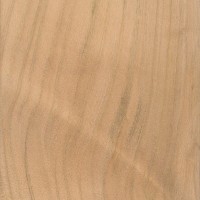
|
Common Name(s): Sweet Cherry, Wild Cherry, European Cherry
Scientific Name: Prunus avium Distribution: Europe and Asia Tree Size: 32-65 ft (10-20 m) tall, 1-2 ft (.3-.6 m) trunk diameter Average Dried Weight: 39 lbs/ft3 (600 kg/m3) Specific Gravity (Basic, 12% MC): .48, .60 Janka Hardness: 1,150 lbf (5,120 N) Modulus of Rupture: 14,980 lbf/in2 (103.3 MPa) Elastic Modulus: 1,529,000 lbf/in2 (10.55 GPa) Crushing Strength: 7,250 lbf/in2 (50.0 MPa) Shrinkage:Radial: 5.1%, Tangential: 8.4%, Volumetric: 13.8%, T/R Ratio: 1.6 |
Color/Appearance: Heartwood is a light pinkish brown when freshly cut, darkening to a deeper golden brown with time and upon exposure to light. Sapwood is a pale yellowish color, typically 1-2″ wide.
Grain/Texture: Has a fine to medium texture with close grain. The grain is usually straight or slightly wavy.
Endgrain: Semi-ring-porous; small pores in no specific arrangement; solitary and radial multiples of 2-3; gum/deposits occasionally present; growth rings distinct due to a concentration of earlywood pores; rays visible without lens; parenchyma absent.
Rot Resistance: Heartwood is rated as being moderately durable to non-durable regarding decay resistance. Sweet Cherry is also susceptible to insect attack.
Workability: Sweet Cherry is easy to work with both machine and hand tools. The only difficulties typically arise if the wood is being stained, as it can sometimes give blotchy results due to its fine, close grain. A sanding sealer or gel stain is recommended. Glues, turns, and finishes well.
Odor: No characteristic odor.
Allergies/Toxicity: Although there have been no adverse health effects reported for Sweet Cherry, the closely related Black Cherry has been reported to cause respiratory effects. See the articles Wood Allergies and Toxicity and Wood Dust Safety for more information.
Pricing/Availability: Typically only available in Europe (or from orchards), Sweet Cherry is usually only sold in smaller sizes or as veneer. Prices should be moderate within the tree’s natural distribution.
Sustainability: This wood species is not listed in the CITES Appendices or on the IUCN Red List of Threatened Species.
Common Uses: Veneer, furniture, cabinetry, turned objects, musical instruments, and carvings.
Comments: Sweet Cherry is the Old World counterpart to Black Cherry found in North America. Sweet Cherry is said to exhibit a bit more of a color contrast than Black Cherry, and it also tends to be slightly denser and stronger. However, the tree itself tends to be smaller than Prunus serotina, and does not yield the larger sizes of lumber that are available for the American species.
Scans/Pictures: A special thanks to Steve Earis for providing the wood sample and turned photo of this wood species.


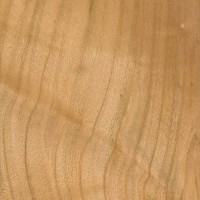
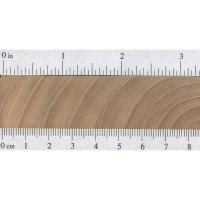
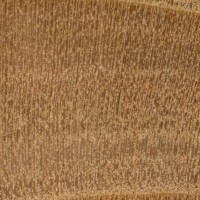
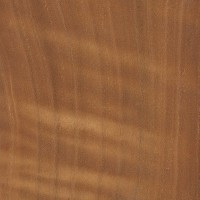
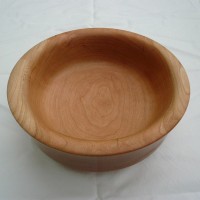



~6 inch Santoku style knife with cherry scales, made for my mother. The first knife (handle) I’ve made. Pretty sure it is Sweet Cherry, but could very well be wrong.
A renaissance lute I built from European Cherry (soundboard of German/Alpine Spruce and fingerboard of Swiss Pear)
Peach wood is used a lot in our country
Light wood, beautiful and very cheap price.
I agree. Cherry does have a distict odor, somewhat fruity. I like it a lot.
I have worked with cherry a fair amount in the last couple months, and I have noticed a distinct odor to it, primarily when wet. It seemed to me to be something like artificial cherry flavor, but my mother says that it is more like almonds.
My friend has a piece of trunk he found in a wood and despite being just non-worked wood, it has a quite strong fruity scent similar to…sweet cherry, like it was addictioned with sugar. Personally, I find it very pleasant. I can confirm that even in Italy, where wild trees are present, this wood is quite uncommon and costly, the trunk is quite shallow, so you don’t have many material available, also, in nature, it tends to rot quickly, so you have to find a living tree (a not easy task, because they grow solitary, not in groups, like aspen… Read more »